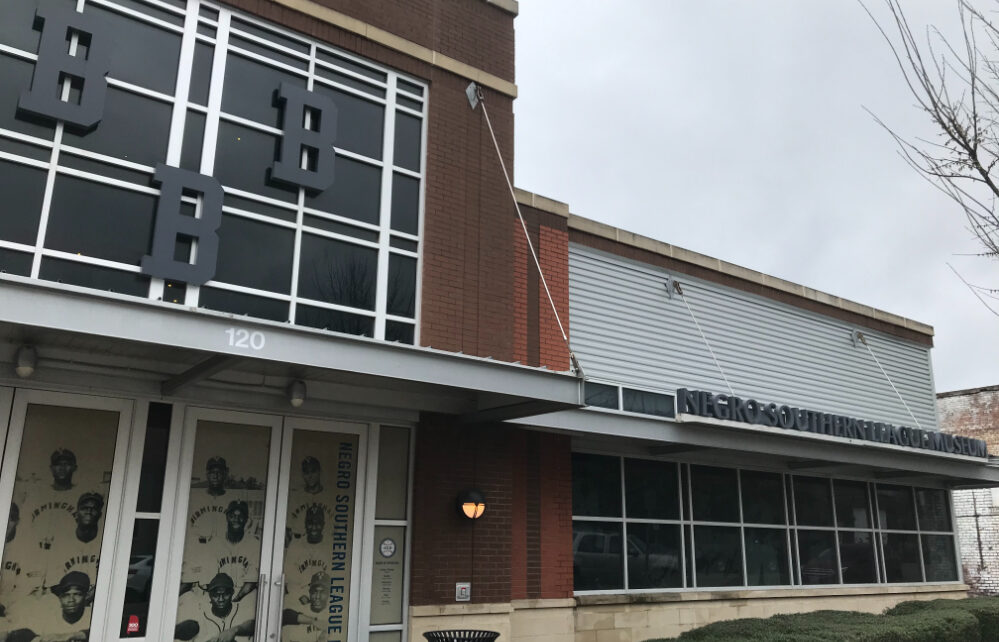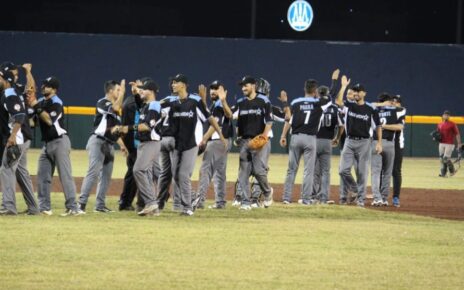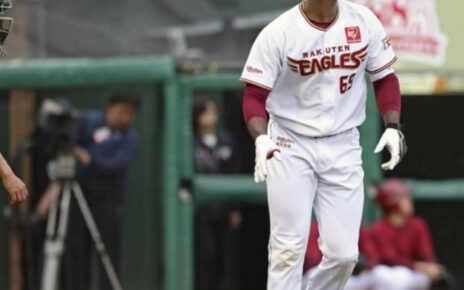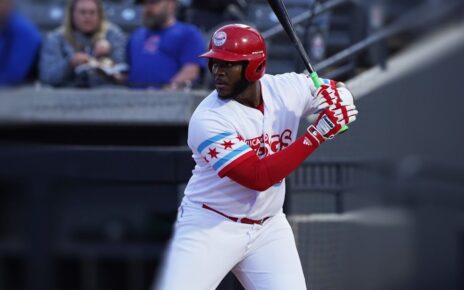In the heart of downtown Birmingham, Alabama rests Railroad Park. It’s a sprawling area that the government of Birmingham has brought about to highlight the past, present, and future of the city. Key to Railroad Park is the presence of Regions Field, home of the Birmingham Barons of Minor League Baseball’s Southern League. Nestled next to the ballpark is the largest collection of Negro Leagues memorabilia in the world; the Negro Southern League Museum.
A week ago I received a press release from the public relations department of the museum. I almost instantly swiped the email away but I stopped when I realized that I had never heard of the museum in question. I immediately took advantage of the chance to schedule an interview with Alicia Johnson Williams, the museum’s Director. In the meantime, I set about researching the museum and shedding light on a place I embarrassingly knew nothing about.
The NSLM was the brainchild of Dr. Layton Revel and the city of Birmingham. The story goes that Dr. Revel was at the annual Negro Leagues reunion held at Birmingham’s historic Rickwood Park (originally the home field for the Barons as well as the Birmingham Black Barons) when he started talking to the then-mayor of the city. According to Johnson Williams, Dr. Revel and the mayor discussed the possibility of Dr. Revel using Birmingham to showcase his considerable Negro Leagues memorabilia collection (the largest in the world). As with all things in a bureaucracy, it took some time, but in late 2015 the NSLM opened to the world.
It can’t be understated how important Dr. Revel is to the museum as well as to the legacy of the Negro Leagues. His imprint has been present for many years now in the form of the Center for Negro League Baseball Research. Dr. Revel is the founder and Executive Director of that endless source of Negro Leagues research and information. The NSLM website proudly states that it only houses 4% of Dr. Revel’s collection at any given time. That’s 4% in over 8,000 square feet of exhibit space, including a research center at the heart of the museum that is the dream destination for anyone interested in researching the Negro Leagues.
The collection at Dr. Revel’s fingertips is so large that Johnson Williams states once a year (though not this year thanks to the Coronavirus) the Doctor and his team will sit down and rotate out the majority of the museum. New memorabilia and artifacts find their way into the various exhibits and display cases. Every year the museum celebrates the Negro Leagues in a new way thanks to the expanse of Dr. Revel’s collection. All in all, this makes the NSLM a destination any baseball fan will want to return to again and again.
There are two exhibits of the museum that aren’t rotated out every year.
First is the Hall of Balls exhibit found in the Dugout section that greets visitors as they first enter the museum. This always expanding exhibit is a collection of baseball’s autographed by former Negro Leaguers. Hall of Famers and journeymen alike have contributed to the Hall of Balls. Currently, the collection sits at over 1,600 baseballs and is a great attention grabber to start any tour.
The crown jewel of the museum is the Satchel Paige hologram exhibit. This is tougher to explain and Johnson Williams agrees, “It’s hard to put into words, it’s something that you do and then you want to keep doing over and over again.” The Satchel Paige hologram is as it states, a hologram of Satchel Paige. You stand on one end and you select any of the pitches that the Negro Leagues legend tossed throughout his career. The holographic ball is then passed along to Satchel who throws the pitch in your direction allowing the recipient to experience the break of a Paige curveball or the velocity of his feared fastball. It’s impossible to describe but by all reports an absolute joy to experience.
The museum is also interesting in that it has a story to tell. Most museums are places where artifacts and trinkets are stored and history is conveyed. The NSLM is that, but it presents its history in a way that highlights the city of Birmingham. “The overwhelming number of Negro Leaguers came from the South,” Johnson Williams explains as she delves deep into the mission of the museum to tell the story of the Negro Leagues through the eyes of Birmingham. “These players started out in little known industrial leagues in Alabama and throughout the South. From there many of them made their way to the Negro Leagues and then a select few made it all the way to MLB.” The NSLM exists not just as a repository of Negro Leagues history but as a place where people can come to trace the roots of black baseball in America and the special role that Birmingham played in that history.
The Negro Southern League Museum is overseen by the city of Birmingham and has established deep roots in the city of Birmingham and the surrounding metro area. There’s no denying that African-American participation in baseball is at a critical low and the NSLM has started many programs aimed at combating that problem. Of special note is their yearly summer camp that allows youth in the Birmingham area to spend three weeks at the museum researching Negro Leagues history, helping to maintain the exhibits, and taking on an active role in connecting their lives to the history of black baseball in America.
Admission to the museum is free of charge. As soon as Coronavirus restrictions are lifted I will be making the museum a definite stop on my next vacation. In the meantime, those looking to support the museum can do so through donations on their website. This Sunday, January 17th at 6 p.m. Central (the correct time) the museum will be holding a virtual celebration of the Negro Leagues centennial. It’s free to attend, though a donation would be much appreciated, and will be a great event featuring historical speakers, celebrities, and former Negro Leagues players. Anyone looking to attend, and everyone should, can register here.
Baseball history is important, none more so than that of the Negro Leagues. The Negro Southern League Museum is an essential player in allowing the important history of the Negro Leagues to reach the public. More people need to know about and support their existence. I know they’ve become a priority for me and hopefully, they will become a priority for more baseball fans moving forward.
Lead photo courtesy of Ollie Samir – Negro Southern League Museum




